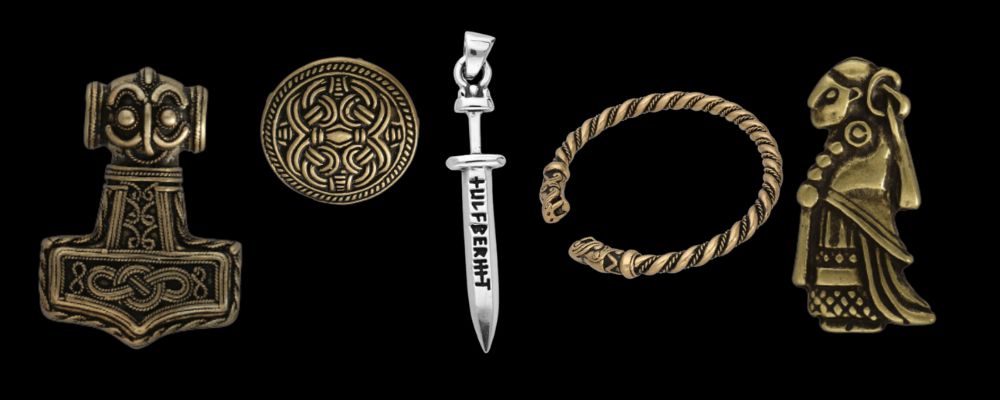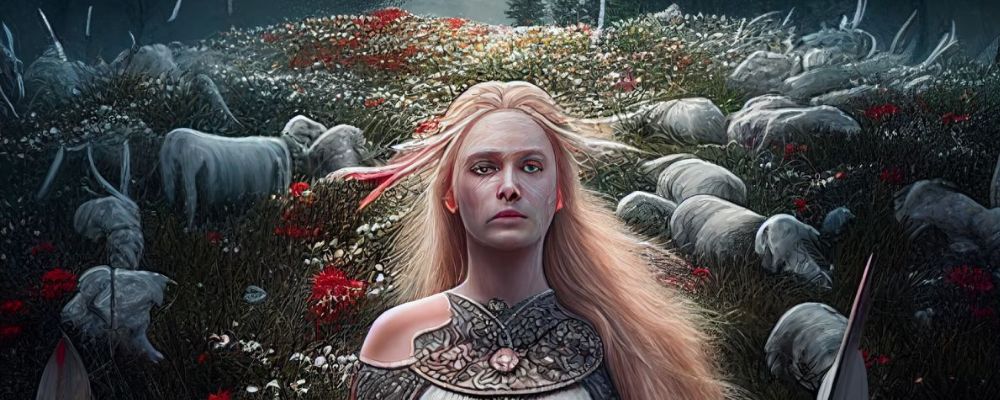
Most people who are interested in the Viking world and Norse mythology have heard of Valhalla. It is an afterlife realm ruled over by Odin. He picks the bravest fallen warriors to live there among the gods and fight alongside them at Ragnarok. Today, it is held up as the ultimate goal of all true Viking warriors.
But this was not the only Viking afterlife and was not the only or even seem to be the first warrior afterlife. The surviving texts also mention Folkvangr, a similar afterlife for brave warriors associated with the goddess Freyja. In fact, she seems even to have had first choice among the fallen, making it the premier land of the dead.
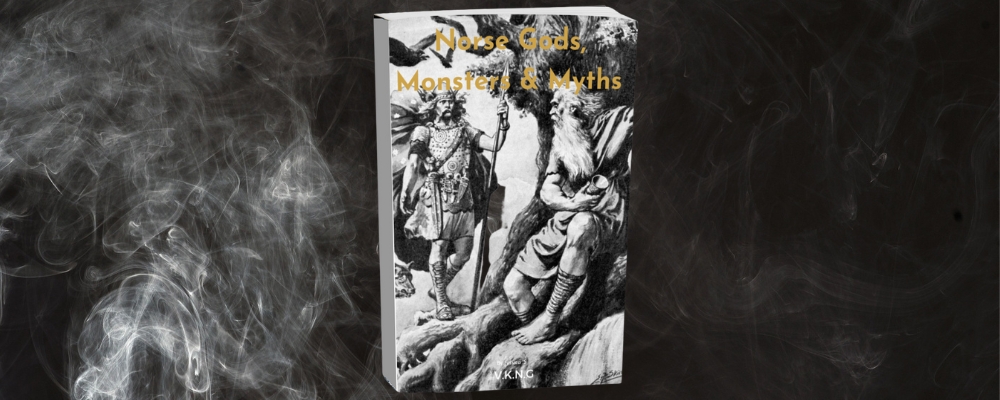
But the reality is that due to the nature of the surviving sources, we know very little about Folkvangr. But today, let’s deep dive into exactly what we do know.
Norse Beliefs in Life After Death
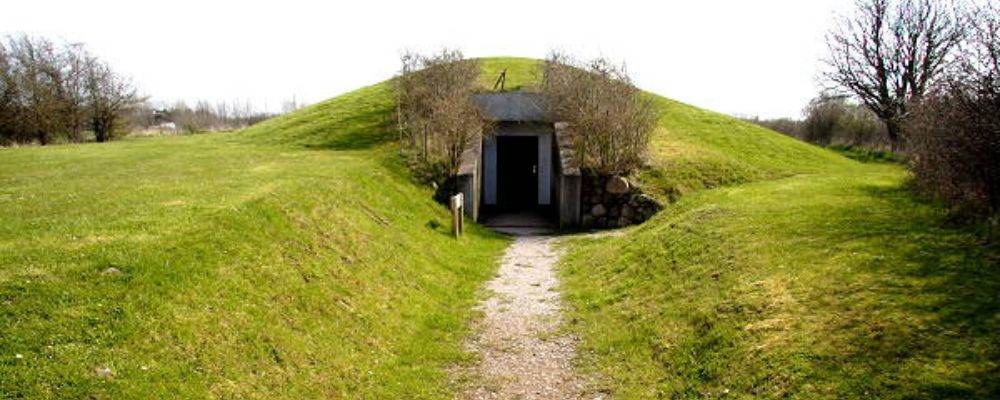
The Vikings believed that the afterlife looked a lot like the world of the living, just somewhere beyond the veil. This is made clear from their burial customs. People were buried with important objects that they used in life, on the assumption that they would be needed in the next life.
In some way, versions of these physical objects would move into the underworld with their owner.
The Vikings had a variety of different, and sometimes inconsistent beliefs about the afterlife. Most people have heard of Valhalla and Helheim, which was an afterlife for people who didn’t make it to Valhalla, but not specifically for the wicked.
But these seem to be just two worlds in a more general “existence beyond the veil”. The underworld is also described as Heldafjell, a holy mountain. This does not seem to be a specific place as individual burial mounds were also considered gateways between the two worlds. They were especially likely to open during Alfablot, the festival of the dead.
In this afterlife, the deceased are described as pretty much carrying on as they did in life but reunited with their lost loved ones. It was a familiar rather than scary place. In the framework of these beliefs, it makes sense that after death, the greatest warriors would continue to be so.
Valhalla and a Warrior’s Death
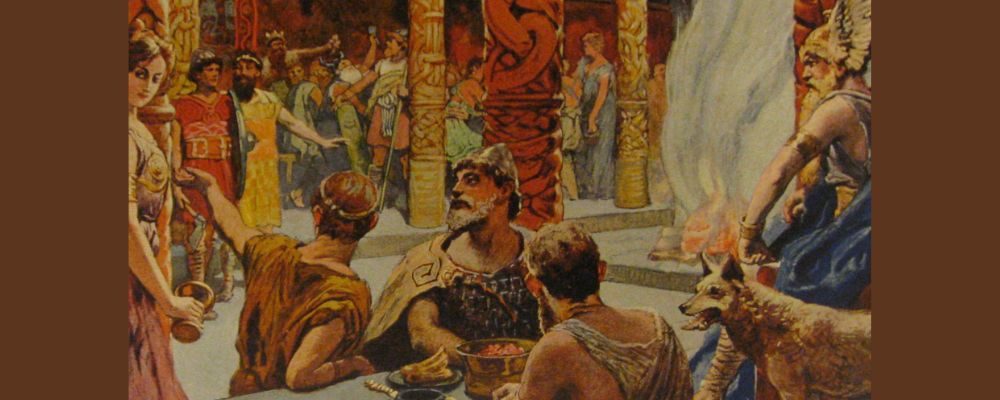
Quite a bit of information survives about Valhalla in the Norse sources, and it has been heavily romanticized in modern retellings. It has gained a reputation as being a kind of Nirvana for Vikings.
Valhalla is described as a great hall, presided over by Odin, located in Asgard, the realm of the Aesir gods. Some of the brave warriors who die in combat are chosen by Odin to live in Valhalla after death. They became known as the Einherjar.
They are recruited and brought to Valhalla with the assistance of the Valkyrie, who are divine shieldmaidens. The warriors are met by the Bard of Valhalla, Bragi, and are served mead by the Valkyrie. While in Valhalla, the Einherjar train and feast. They are preparing to join the gods in the final battle of Ragnarok.
Folkvangr: Also A Land For Fallen Warriors
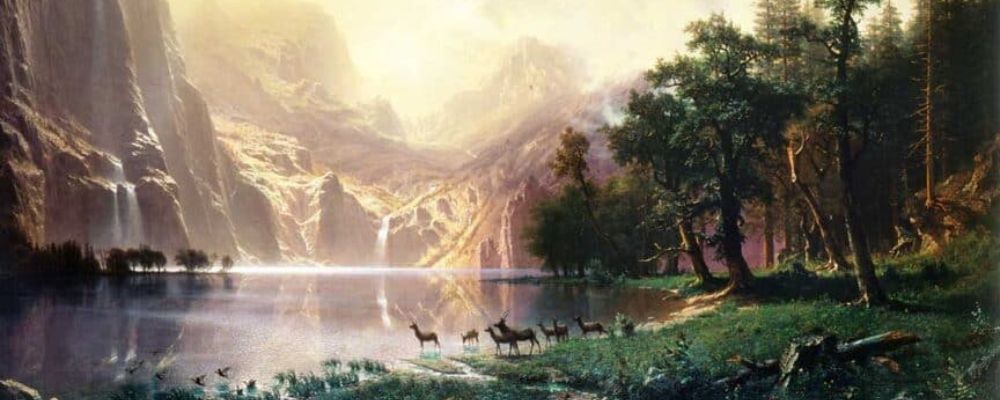
Folkvangr means “field of the people” or “army field” and it is described as a field of a meadow that belongs to the goddess Freyja. She is one of the Vanir gods, but has lived in Asgard among the Aesir since the end of the Aesir-Vanir war. It is within or part of Sessrumnir, which is Freyja’s domain. It is unclear whether this is located in Asgard, or Vanaheim, the home realm of the Vanir, but the former seems likely, so it is close to Valhalla.
According to the sources, Freyja also chooses brave fallen warriors from among the dead on the battlefield to dwell in her Folkvangr afterlife. In fact, she and Odin seem to split the warriors 50, and she seems to get the first choice.
But there is some implication that Folkvangr may not have been just for warriors. In Egil’s saga, when Egil refuses to eat, his daughter says that she will also go without food until she starves to death and can eat at the table of Freyja. This may suggest that Freyja values things beyond a warrior’s strength with choosing people for Folkvangr.
Sessrumnir: Ships of the Dead
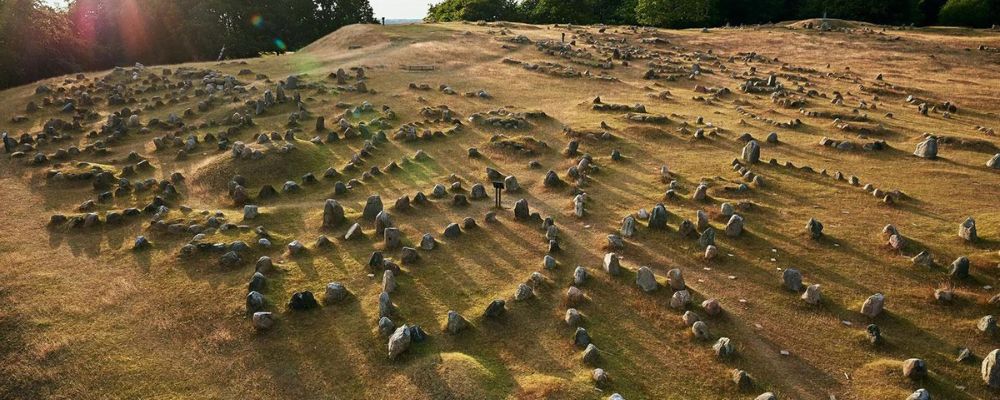
Scholars make a lot of the fact that Folkvangr is closely connected with Freyja’s hall Sessrumnir, which means “seat room”. But elsewhere, Sessrumnir also seems to refer to a ship that Freyja possesses.
This has been connected with stone ships, made from standing stones, that are found in fields around Scandinavia and are burial grounds. Are these in some way representations of Folkvangr?
Is this also a clue about the tradition of Viking ship burial? And could these also explain the relatively large number of women found within ship burials, such as in the case of the famous Oseberg burial?
Sadly, until further evidence is uncovered, this is all speculation.
The Relationship Between Valhalla and Folkvangr
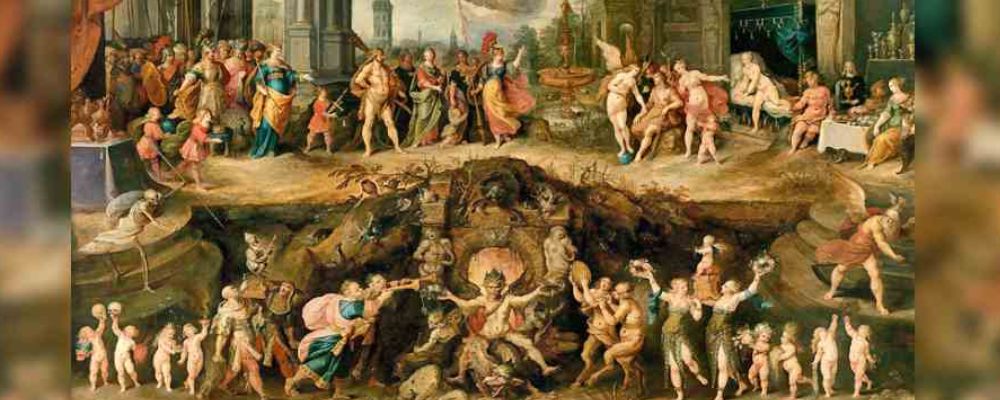
There is clearly a tantalizing relationship between Valhalla and Folkvangr, but uncovering it seems to be just beyond our reach. It is even more interesting when we consider that it is likely that Freyja and Frigg were initially one goddess, which was split into two by the Viking age. This would mean that Freyja-Frigg was the consort of Odin, bringing the two realms even closer together.
It is important to note that most of the information that we have about Valhalla, and about Helheim, comes from Christian authors in the 13th century, especially Snorri Sturluson. It is very clear from his description of Helheim that he was trying to make it match the Christian idea of Hell. He introduces the idea of there being realms in Helheim where the wicked are tortured, which doesn’t seem to come from earlier sources. While it is less obvious, he also seems to establish Valhalla as an alternative to heaven.
So, Sturluson has plucked these two ideas out and presented them in a way to match his Christian faith. In doing so, he has distorted how these underworld realms relate to the other underworld realms that appear in the Norse sources.
